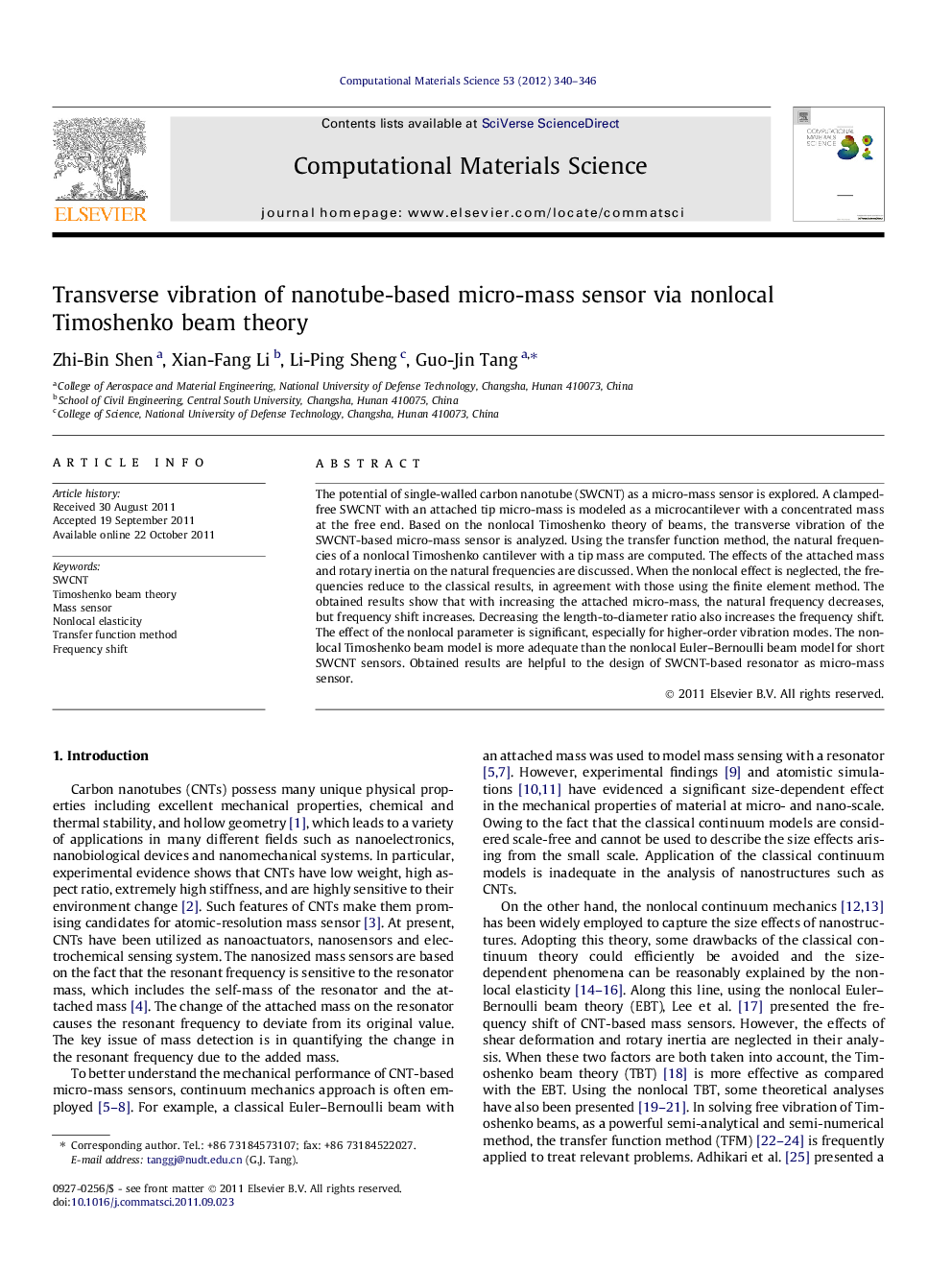| Article ID | Journal | Published Year | Pages | File Type |
|---|---|---|---|---|
| 1561908 | Computational Materials Science | 2012 | 7 Pages |
The potential of single-walled carbon nanotube (SWCNT) as a micro-mass sensor is explored. A clamped-free SWCNT with an attached tip micro-mass is modeled as a microcantilever with a concentrated mass at the free end. Based on the nonlocal Timoshenko theory of beams, the transverse vibration of the SWCNT-based micro-mass sensor is analyzed. Using the transfer function method, the natural frequencies of a nonlocal Timoshenko cantilever with a tip mass are computed. The effects of the attached mass and rotary inertia on the natural frequencies are discussed. When the nonlocal effect is neglected, the frequencies reduce to the classical results, in agreement with those using the finite element method. The obtained results show that with increasing the attached micro-mass, the natural frequency decreases, but frequency shift increases. Decreasing the length-to-diameter ratio also increases the frequency shift. The effect of the nonlocal parameter is significant, especially for higher-order vibration modes. The nonlocal Timoshenko beam model is more adequate than the nonlocal Euler–Bernoulli beam model for short SWCNT sensors. Obtained results are helpful to the design of SWCNT-based resonator as micro-mass sensor.
Graphical abstractTransverse vibration of a single-walled carbon nanotube (SWCNT) based mass sensor with an attached tip micro-mass is analyzed based on the nonlocal Timoshenko beam theory.Figure optionsDownload full-size imageDownload as PowerPoint slideHighlights► Transverse vibration of SWCNT micro-mass sensor is analyzed. ► Nonlocal Timoshenko cantilever with an attached tip mass is modeled. ► Transfer function method is used to obtain frequency of a microcantilever. ► Effects of attached mass, small scale, rotary inertia on frequency are discussed.
